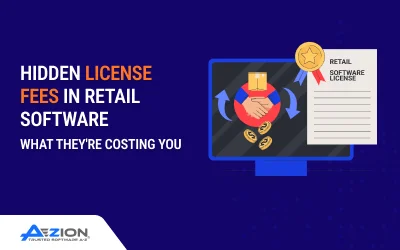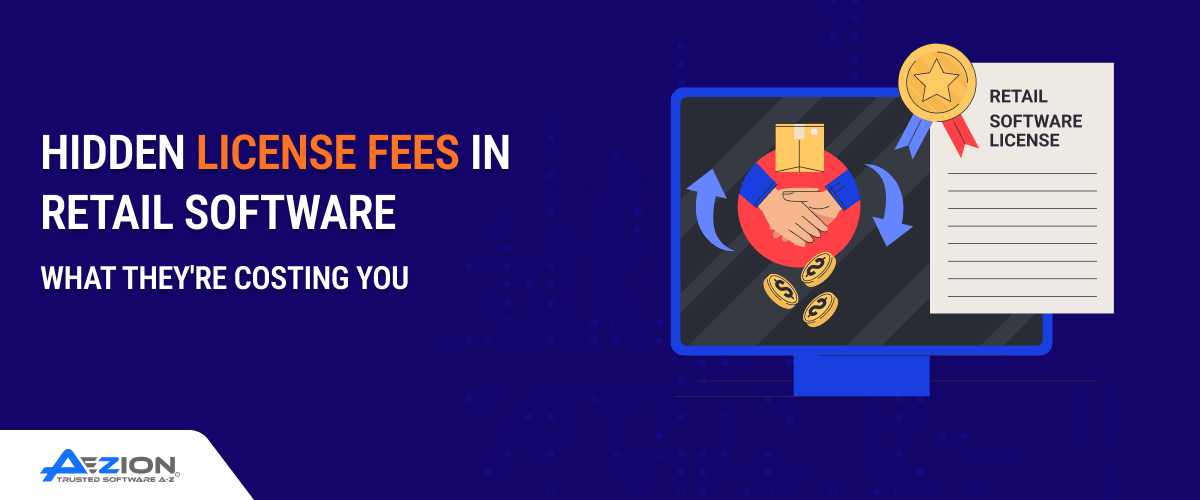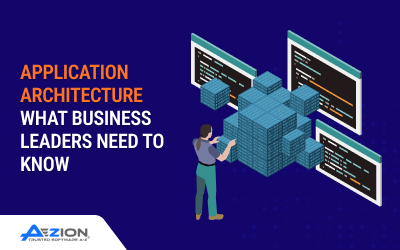Summary
Hidden license fees in off-the-shelf retail software often raise costs and disrupt operations. This blog explores their real impact, why retailers are shifting to custom retail software, compares licensing models, uncovers billing traps, and explains how custom development delivers predictable costs and complete ownership for retail businesses in 2025.
Introduction
Off-the-shelf software may look affordable, but hidden costs like per-seat charges, renewals, upgrades, and bug fixes can quickly shrink margins. This blog breaks down these costs and explains why custom retail software delivers better predictability, control, and long-term financial benefits for retailers.
The Real Cost of Off-The-Shelf Retail Software
Retailers often overlook the long-term cost of off-the-shelf software. The low upfront price conceals recurring fees for licenses, user seats, upgrades, and support that increase in line with your business growth. The table below shows why custom retail software is a smarter and more economical choice over time.
| Cost Element | Off-the-Shelf Software | Custom Retail Software |
| Upfront Cost | Low initial licensing fee | Higher development investment upfront |
| License Fees | Recurring annual or monthly payments | None |
| User/Device Limits | Charges for each additional user or device | Unlimited usage or no extra cost for scale |
| Support and Maintenance | Often billed separately or in tiers | Typically bundles under long-term service agreements |
| Upgrade Costs | Version updates may require new fees or licenses | Controlled internally, no forced upgrades |
| Customization | Limited; additional costs apply | Tailored to your exact business needs |
| Total Cost Over 3-5 Years | Grows significantly with business scale | Stabilizes after initial investment |
How Hidden License Fees Drain Your Margins
License-based pricing models quietly strain budgets. What starts as a manageable cost quickly grows harder to control as operational needs rise. These recurring fees scale with usage, not value, cutting into profits without delivering proportional returns.
- Monthly Costs That Scale With Growth: Charges rise with every new user, register, or device. Entry-level plans rarely meet the needs of growing retailers, making expansion an expensive decision.
- Restrictions on Scalability and Flexibility: Adding payment integrations, analytics, or new locations often triggers extra fees. Over time, the software stops enabling growth and instead charges for essential operations.
- Vendor Lock-In and Compliance Penalties: Ending a subscription may risk data loss, transfer limits, or termination fees. Staying compliant with tax or security rules often means paying for upgrades, turning compliance into a recurring expense.
Why Retailers Are Shifting To Custom Software Development
Retailers are reaching the limits of off-the-shelf tools and shifting to ownership-based models. Custom-built systems provide control over features, user access, and upgrades—without unpredictable costs. This shift isn’t just about flexibility but about removing licensing pressure and aligning software with real operational needs.
- Predictable Costs With No Licensing Surprises: Custom software eliminates per-user and per-device fees. Development costs are fixed upfront, and ownership ensures clear, stable maintenance costs without vendor-driven price hikes.
- Full Ownership and Long-Term ROI: One-time investment means you own the software, reducing your dependence on vendors. This supports accurate financial planning and delivers higher ROI—especially for retailers with multiple stores or complex workflows.
- Build For Your Processes, Not Generic Ones: Custom retail software matches your operations instead of forcing you to adapt. It reduces friction, eliminates workarounds, and boosts efficiency by aligning tools with your daily tasks.
How To Calculate The Break-Even Point of Going Custom
Switching to custom software is primarily a financial choice, not just a technical upgrade. The upfront investment may be higher, but long-term savings often surpass it. The key is comparing recurring expenses over time with the fixed cost of custom development.
Comparing Multi-Year Licensing Cost vs One-Time Development
| Cost Element | Off-the-Shelf Software | Custom Retail Software |
| Licensing (3 Years) | $15,000-$30,000+ | $0 (after development) |
| Upgrade Charges | $3,000-$6,000+ | Included or scheduled as needed |
| User/Devices Fees | $5-$20 per user/device per month | None |
| Support and Compliance | Extra or tiered | Fixed or internally managed |
| Total 3-Year Estimate | $25,000-$45,000+ | $15,000-$25,000 (one-time) |
Note: The costs mentioned above are tentative; the actual costs may vary depending on your specific needs and requirements.
Maintenance and Upgrade Considerations
Custom solutions include clear maintenance plans, with updates scheduled around your business needs—not vendor deadlines. This removes surprise upgrade fees and minimizes downtime from major system changes.
When Custom Becomes More Profitable
Custom software becomes cost-effective once licensing expenses surpass development costs. This point arrives sooner for multi-store chains, high-volume retailers, or businesses needing specialized workflows and reporting.
Questions To Ask Before Choosing Any Retail Software
Choosing retail software isn’t just about features—it’s about cost structure and long-term fit. Decision-makers must assess how pricing, user access, and ongoing changes will affect operations and budgets over time before committing to any solution.
What Licensing Models Are Used?
Vendors may charge per user, device, or transaction. Clarify this upfront to avoid hidden costs and make fair comparisons between solutions.
Can You Scale Users Freely?
Growth should be seamless, not costly. Check if adding users incurs per-seat fees or system limits that slow expansion.
Are Updates, Support, or Compliance Changes Billed Separately?
Upgrades, security patches, and regulatory updates shouldn’t feel like premium add-ons. Confirm what’s included versus billed as extras.
What Happens If You Want To Leave The Vendor?
Some providers impose termination fees or restrict data exports. Know the exit terms to avoid lock-in and keep future options open.
Is the Software Built To Adapt To your Business Model?
The system should adapt to your processes—not force you into a predefined workflow. Ensure it supports process-level customization for smooth operations.
Conclusion
What starts as a cost-effective solution can become a long-term financial drain. Hidden license fees, user charges, and forced upgrades slowly cut into margins—especially in high-growth retail. Off-the-shelf tools offer convenience, but their long-term costs often outweigh the short-term savings.
That’s why many retailers are turning to custom retail software development to regain control over pricing, ownership, and scalability. With predictable costs and systems built around your workflows, custom solutions are not just smarter financially—they align seamlessly with how you operate your business.
FAQs
Why are hidden license fees often overlooked during software selection?
Vendors highlight attractive base pricing while extra charges sit in the fine print. Fees for users, upgrades, and renewals typically become apparent only after implementation or as your business expands.
Is custom retail software too expensive for small or mid-sized stores?
Not always. Many smaller retailers break even within 2–3 years. For growing or specialized businesses, custom software can lower total spend over time.
Can custom software adapt to changes in my retail model?
Yes. Built around your workflows, custom systems can evolve with your operations—without licensing limits or forced upgrades.
How do I estimate the real cost of my current software?
Include licenses, renewals, support, upgrades, and integrations. Comparing a 3–5 year total with the one-time cost of custom software gives an accurate cost picture.
What if I’ve already invested in off-the-shelf software?
You can transition gradually by starting with one process or adding a custom module to minimize disruption and manage risk.




